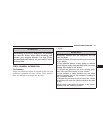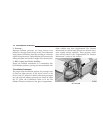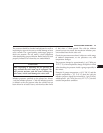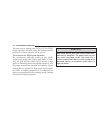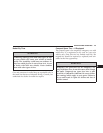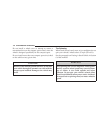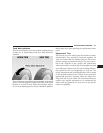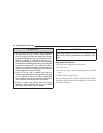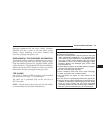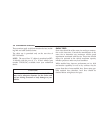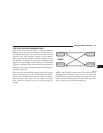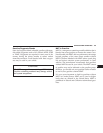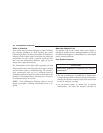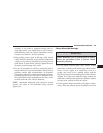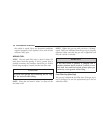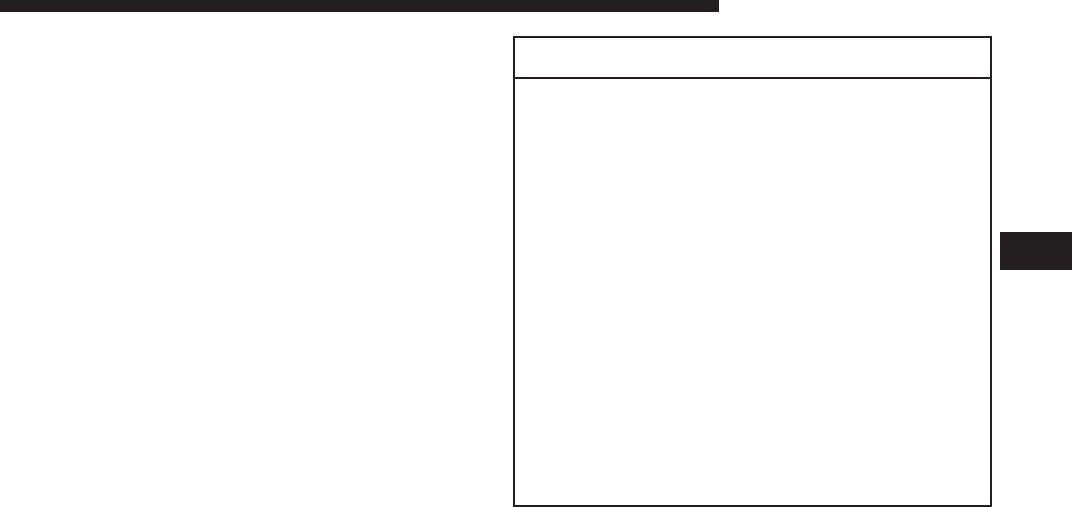
Improper alignment will not cause vehicle vibration.
Vibration may be a result of tire and wheel out-of-
balance. Proper balancing will reduce vibration and
avoid tire cupping and spotty wear.
SUPPLEMENTAL TIRE PRESSURE INFORMATION
A light load vehicle condition is defined as two passen-
gers {150 lbs (68 kg) each} plus 200 lbs (91kg) of cargo.
Cold tire inflation pressures for a lightly loaded vehicle
will be found on a “Supplemental Tire Pressure Inflation”
label located on the face of the driver’s door or in the Tire
Information Pressures pamphlet in the glove box.
TIRE CHAINS
Use “Class S” chains on SRT–10 models, or other traction
aids that meet SAE Type “S” specifications.
Tire chain use is permitted only on the rear tires of
SRT–10 models.
NOTE: Chains must be the proper size for the vehicle,
as recommended by the chain manufacturer.
CAUTION!
To avoid damage to your vehicle, tires or chains, observe
the following precautions:
• Because of limited chain clearance between tires and
other suspension components, it is important that
only chains in good condition are used. Broken chains
can cause serious vehicle damage. Stop the vehicle
immediately if noise occurs that could suggest chain
breakage. Remove the damaged parts of the chain
before further use.
• Install chains as tightly as possible and then retighten
after driving about 1/2 mile (0.8 km).
• Do not exceed 45 mph (72 km/h).
• Drive cautiously and avoid severe turns and large
bumps, especially with a loaded vehicle.
• Do not install tire chains on front wheels of 4x2
vehicles.
• Do not drive for a prolonged period on dry pavement.
• Observe the tire chain manufacturer’s instructions on
method of installation, operating speed, and condi-
tions for usage. Always use the lower suggested
operating speed of the chain manufacturer if different
than the speed recommended by the manufacturer.
STARTING AND OPERATING 179
5



